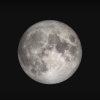Space
 Alumni, industry execs and other space buffs celebrated the state’s growing prominence in aerospace—from probing the Bennu asteroid to an array of industry partnerships—at the second annual CU Boulder Aerospace Summit earlier this week.
Alumni, industry execs and other space buffs celebrated the state’s growing prominence in aerospace—from probing the Bennu asteroid to an array of industry partnerships—at the second annual CU Boulder Aerospace Summit earlier this week. Students and faculty at BioServe Space Technologies in aerospace engineering built two biomedical payloads that will be launched aboard a SpaceX Falcon 9 rocket Feb. 18 to the International Space Station.
Students and faculty at BioServe Space Technologies in aerospace engineering built two biomedical payloads that will be launched aboard a SpaceX Falcon 9 rocket Feb. 18 to the International Space Station. University of Colorado Boulder researchers have discovered an atmospheric escape route for hydrogen on Mars, a mechanism that may have played a significant role in the planet’s loss of liquid water.
University of Colorado Boulder researchers have discovered an atmospheric escape route for hydrogen on Mars, a mechanism that may have played a significant role in the planet’s loss of liquid water.
 CU Boulder students and professionals from the Laboratory for Atmospheric and Space Physics will operate the satellite for an upcoming NASA mission to investigate exotic astronomical objects like black holes, neutron stars and pulsars.
CU Boulder students and professionals from the Laboratory for Atmospheric and Space Physics will operate the satellite for an upcoming NASA mission to investigate exotic astronomical objects like black holes, neutron stars and pulsars. Researchers have found Earth's upper atmosphere has a natural thermostat that dramatically cools the area after powerful solar storms bring on the heat.
Researchers have found Earth's upper atmosphere has a natural thermostat that dramatically cools the area after powerful solar storms bring on the heat. Graduate student Heather Hava has received several national awards for her research on developing new research tools for growing and maintaining fruits and vegetables in a space environment. And she wouldn't mind being among the first astronauts to reap the benefits of gardens grown in the low gravity of space.
Graduate student Heather Hava has received several national awards for her research on developing new research tools for growing and maintaining fruits and vegetables in a space environment. And she wouldn't mind being among the first astronauts to reap the benefits of gardens grown in the low gravity of space. Nov. 14, 2016 Right before sunrise on Monday, something really super is going to happen. That’s when we’ll be treated to a
Nov. 14, 2016 Right before sunrise on Monday, something really super is going to happen. That’s when we’ll be treated to a Solar flares could damage satellites, trigger radio blackouts and even threaten the health of astronauts by penetrating spacecraft shielding. That's why scientists are on a quest to better understand space weather, and a soon-to-launch instrument package will help.
Solar flares could damage satellites, trigger radio blackouts and even threaten the health of astronauts by penetrating spacecraft shielding. That's why scientists are on a quest to better understand space weather, and a soon-to-launch instrument package will help. A team of astronomers, including one from CU Boulder, used the super-sharp radio vision of the National Science Foundation's Very Long Baseline Array (VLBA) to find the shredded remains of a galaxy that passed through a larger galaxy, leaving only the smaller galaxy's nearly-naked supermassive black hole to emerge and speed away at more than 2,000 miles per second.
A team of astronomers, including one from CU Boulder, used the super-sharp radio vision of the National Science Foundation's Very Long Baseline Array (VLBA) to find the shredded remains of a galaxy that passed through a larger galaxy, leaving only the smaller galaxy's nearly-naked supermassive black hole to emerge and speed away at more than 2,000 miles per second. A NASA mission to Mars led by CU Boulder has shown that water escaping from the planet's atmosphere is driven in large part by how close it is to the sun.
A NASA mission to Mars led by CU Boulder has shown that water escaping from the planet's atmosphere is driven in large part by how close it is to the sun.


